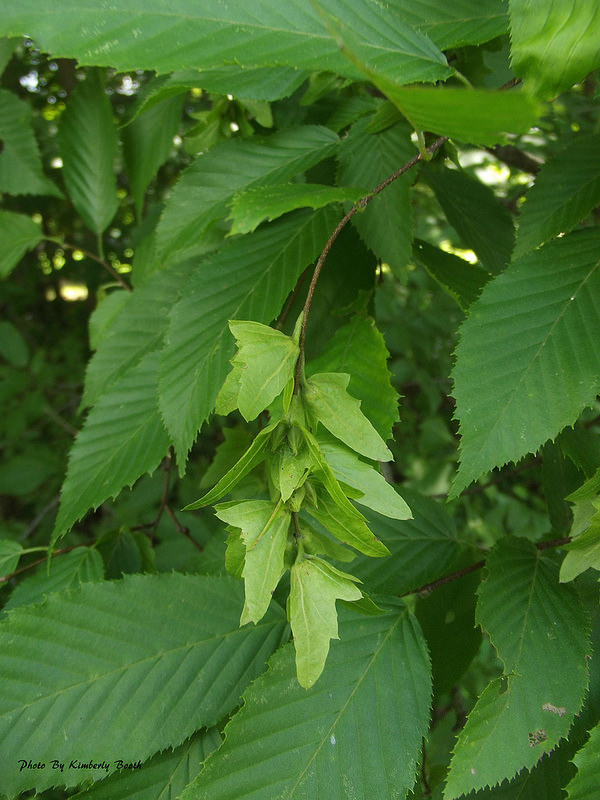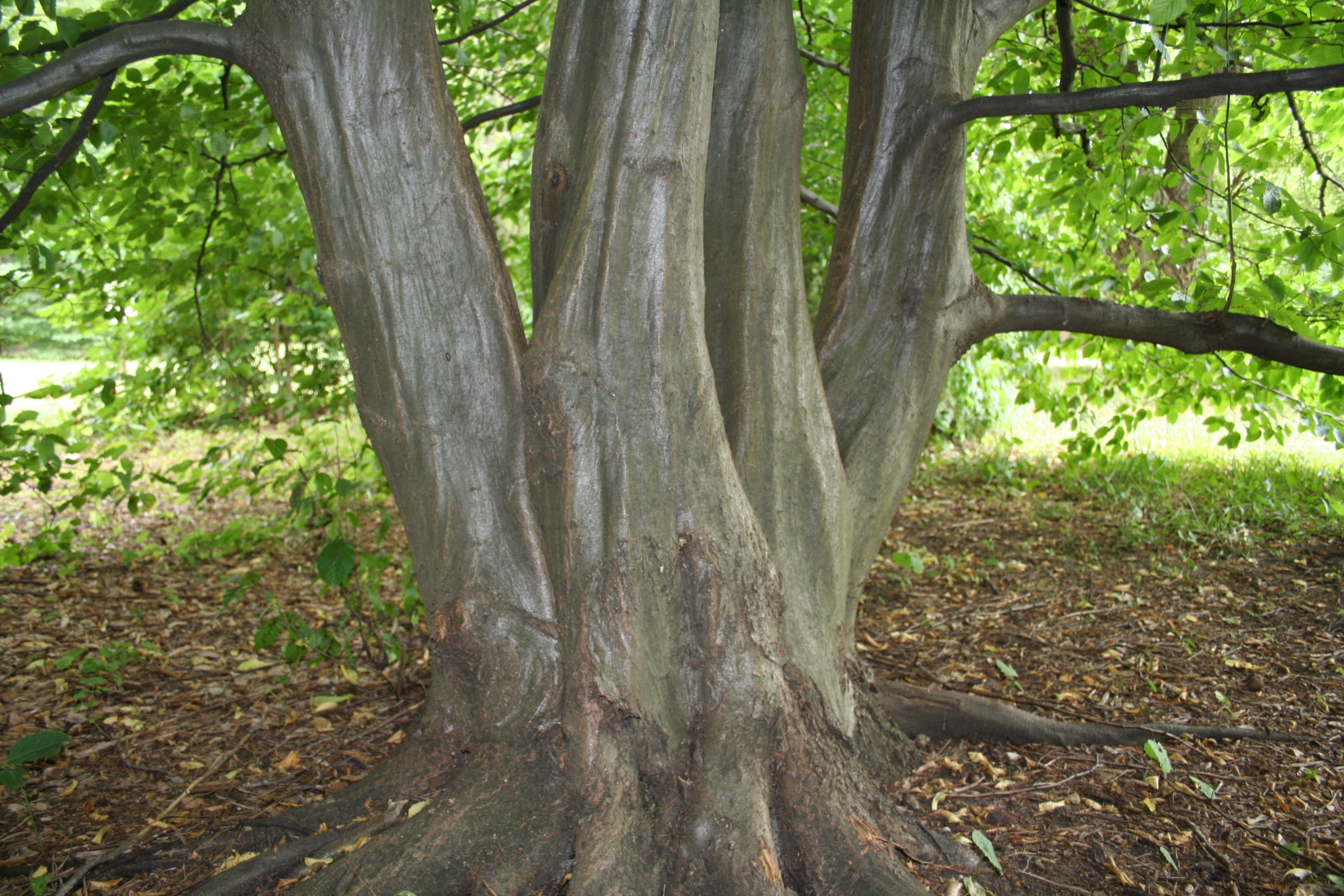American Hornbeam
(Carpinus caroliniana Walter)
Description
The American hornbeam is in the birch or hazel family (Betulaceae) and is a hardwood tree¹. This tree has smooth, thin, bluish-gray bark that looks like a muscle which is why its other common name is musclewood. Other common names include blue beech and ironwood ². The trunk is up to a foot wide in diameter and typically has more than one trunk. American hornbeam can reach 20 to 40 ft in height and the canopy can be 20 to 30 feet in width. The leaves are two to five inches long and are simple, alternate and are weakly double serrated with parallel veins 2,3. The flowers of the American hornbeam are found from April until June and are green catkins. The female flower being two to three inches long with three lobed bracts and the males being only a little over one inch. The fruit from this tree is a winged nutlet about ⅓-inch and is attached to three-lobed bracts ².
Sinewy and smooth trunk of American hornbeam, Nebraska Forest Service 11.

American hornbeam leaves and fruit. @ K. Booth, 2015. Maryland Plant Atlas 6.
Distribution
The American hornbeam is normally found in wooded areas such as forests with moist, acidic soil. While they can survive living in direct sunlight, they prefer partial shade and are a common understory tree in forests because of this4. The American hornbeam is distributed throughout southeastern Canada and the eastern US and is found all throughout Maryland 6.
Native distribution of American hornbeam 10.
Wildlife importance
The American hornbeam has many important functions for the native animals and wildlife. White-tailed deer eat the leaves and branches for nutrients. Beavers heavily use American hornbeam 4. Native birds, turkeys, grouse and squirrels rely on the seeds land leaf buds from this tree as part of their diet. The American hornbeam is also a host plant for the eastern tiger swallowtail and red-spotted purple caterpillars. This tree also provide shelter to many animals including beavers that make use of the branches of this tree to build their dams 2,4,5.
Economic importance
The wood of this tree doesn’t have many important uses, so it is not of high economic importance. The wood can be used to make small wooden objects like mallets and hammers 4.
Threats
The American hornbeam is not susceptible to many common disease’s trees normally get such as insect infestations and fungus, although twig blight can be a concern for the American hornbeam. Some environmental conditions may be harmful for these trees such as seasonal flooding and drought since the American hornbeam is considered intolerant to them 2,8. Hornbeam is very susceptible to fire 4.
Interesting facts
- The American hornbeam is resistant to many pests and diseases7.
- Because it doesn’t crack, the wood from the American hornbeam was used by American pioneers for making dishes such as bowls 4.
References
- Morton Arboretum: American hornbeam
- North Carolina Extension: Carpinus caroliniana
- University of Kentucky College of Agriculture, Food and Environment: American hornbeam
- USDA, NCRS Plant Fact Sheet: American Hornbeam
- Nebraska Forest Service: Hornbeam
- Maryland Plant Atlas: Carpinus caroliniana
- Better Homes & Gardens: American hornbeam
- There University of Maine Cooperative Extension: American hornbeam
- North Carolina Native Plant Society: Carpinus caroliniana
- Wickimedia Commons: Carpinus caroliniana
- Nebraska Forest Service: Hornbeam

